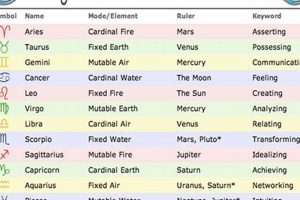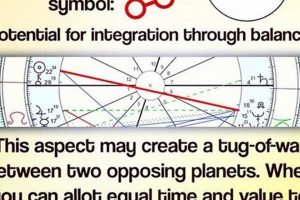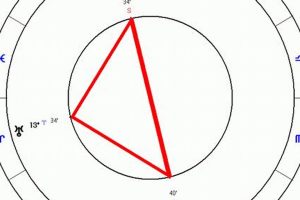
Western astrology traditionally utilizes twelve zodiac constellations, forming the basis for personality assessments and predictions. The inclusion of a thirteenth constellation, Ophiuchus, has gained some traction, leading to a system that encompasses... Read more »

Western astrology traditionally utilizes twelve constellations forming the zodiac as symbolic representations of personality traits, strengths, weaknesses, and life paths. These constellations, through which the sun appears to travel throughout the year,... Read more »

In astrology, the positions of celestial bodies relative to one another are believed to influence human affairs and terrestrial events. When planets appear close together from Earth’s perspective, this configuration is significant.... Read more »

In astrological practice, eclipses are significant events, symbolizing periods of rapid transformation, unexpected change, and accelerated growth. They are seen as catalysts that can bring hidden matters to light, expose vulnerabilities, and... Read more »

In astrology, two celestial bodies are considered to be in this configuration when they are approximately 180 degrees apart in the zodiac. This placement creates a dynamic of tension and polarity, similar... Read more »

In astrology, this celestial body represents committed partnership, marriage, and long-term unions. It reveals the dynamics of balance, equality, and fairness within relationships, highlighting both the joys and challenges of shared experiences.... Read more »

In Vedic astrology, a gana represents a temperament or behavioral archetype. Three categories classify individuals: Deva (divine), Manushya (human), and Rakshasa (demon). Each possesses distinctive traits. For instance, Deva tends towards righteousness... Read more »

In astrology, a solar eclipse signifies a potent reset and new beginning. It occurs when the New Moon passes directly between the Sun and Earth, temporarily obscuring the Sun. This celestial event... Read more »

In astrology, a harmonious aspect formed between two celestial bodies separated by approximately 120 degrees is recognized as indicative of ease, flow, and natural talent. This alignment, often represented by a triangle,... Read more »

A T-square is a planetary configuration in astrology formed when two planets are in opposition to each other, both squaring a third planet. This creates a dynamic, often challenging aspect pattern resembling... Read more »


